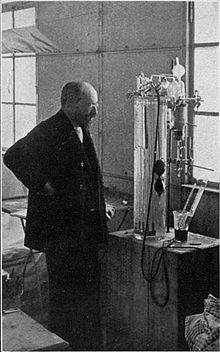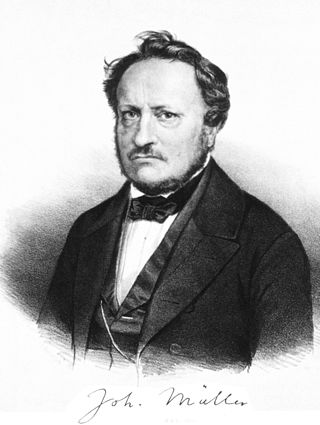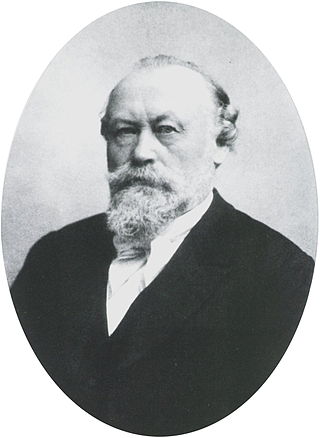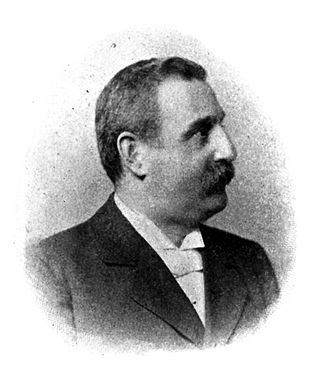

Nathan Zuntz (6 October 1847, in Bonn – 22 March 1920, in Berlin) was a German physiologist born in Bonn. He was a pioneer of modern altitude physiology and aviation medicine.


Nathan Zuntz (6 October 1847, in Bonn – 22 March 1920, in Berlin) was a German physiologist born in Bonn. He was a pioneer of modern altitude physiology and aviation medicine.
He studied medicine at the University of Bonn, where he was an assistant to Max Schultze. In 1868 he earned his doctorate, and following a study trip to Berlin, returned to Bonn in 1870 as an assistant to physiologist Eduard Pflüger. The following year he became a lecturer at the University of Bonn, and in 1872 was an honorary professor of physiology at the Landwirtschaftliche Akademie at Poppelsdorf. From 1881 until his retirement in 1919, he was a professor at the Landwirtschaftliche Hochschule Berlin (Royal Agricultural College) in Berlin. In 1884, Nathan Zuntz was elected as member of the German Academy of Sciences Leopoldina. [1]
Zuntz was involved in many facets of physiological research, including metabolism, respiration and nutrition, and is well known for his work in high-altitude physiology. He conducted extensive research on the physiological changes in animals and humans in extreme conditions. Many of his field studies were conducted at Capanna Regina Margherita, a research station at the apex of Monte Rosa, Italy. In 1902 with his assistant Hermann von Schrötter and meteorologists Arthur Berson and Reinhard Süring, he made two high-altitude balloon ascents in which they reached an altitude of 5000 meters. In 1910 Zuntz participated in a scientific expedition to Pico de Teide in the Canary Islands with Schrötter and physiologists Arnold Durig (1872-1961) and Joseph Barcroft (1872-1947).
He published a number of articles on high-altitude medicine, and one of his better known works was Höhenklima und Bergwanderungen in ihrer Wirkung auf den Menschen (High-Altitude Climate and Mountaineering and their Effect on Humans). In 1885 with August Julius Geppert (1856-1937), he created the Zuntz-Geppert respiratory apparatus, and for field studies Zuntz invented a portable Gasuhr (dry gas measuring device). In 1889 he constructed an early treadmill (Laufband), and in 1914 added an X-ray apparatus to the machine in order to observe cardiac changes during exercise. In addition, he opened the first laboratory dedicated to sports medicine in Germany (1911).

Johannes Peter Müller was a German physiologist, comparative anatomist, ichthyologist, and herpetologist, known not only for his discoveries but also for his ability to synthesize knowledge. The paramesonephric duct was named in his honor.

Gabriel Gustav Valentin, also Gabriel Valentin, was a German physiologist and professor of physiology at the University of Bern.

Prof Eduard Friedrich Wilhelm Pflüger FRSFor HFRSE was a 19th-century German physiologist.

Julius Bernstein was a German physiologist born in Berlin. His father was Aron Bernstein (1812–1884), a founder of the Reform Judaism Congregation in Berlin 1845; his son was the mathematician Felix Bernstein (1878–1956).

Max Richard Constantin Verworn was a German physiologist who was a native of Berlin.

William Thierry Preyer was an English-born physiologist who worked in Germany.
Arnold Durig was an Austrian physiologist remembered for his investigations involving physiological and pathophysiological aspects of individuals exposed to high altitude conditions.

Anton Hermann Victor Thomas Schrötter, name sometimes referred to as Hermann Schrötter von Kristelli was an Austrian physiologist and physician who was a native of Vienna. He was the son of laryngologist Leopold von Schrötter (1837–1908), and grandson to chemist Anton Schrötter von Kristelli (1802–1875).

Reinhard Süring was a German meteorologist who was a native of Hamburg. He died in Potsdam, East Germany on 29 December 1950.

Adolf Loewy was a German physiologist.

Arthur Josef Stanislaus Berson was a German meteorologist and pioneer of aerology who was a native of Neu Sandez, Galicia.

Conrad Eckhard was a German physiologist born in Homberg (Efze), Electorate of Hesse.

Pflügers Archiv: European Journal of Physiology is a peer-reviewed scientific journal in the field of physiology. A continuation of a journal founded in 1868 by the German physiologist, Eduard Friedrich Wilhelm Pflüger, Pflügers Archiv is the oldest physiological journal. Pflügers Archiv is currently published by Springer, with 11 issues per year.

August Julius Geppert was a German pharmacologist born in Berlin.

Willibald Nagel was a German physiologist, best known for his work in the field of sensory physiology.
Ludwig Julius Budge was a German physiologist.

Immanuel Munk was a German physiologist. He was the younger brother of physiologist Hermann Munk (1839–1912).
Physiology, Physiological Chemistry, Pharmacology, with the parallel German title Berichte Physiologie, physiologische Chemie und Pharmakologie, was a German medical journal with a focus on physiology, physiological chemistry and pharmacology, published by Springer. It was established by Carl Oppenheimer, Paul Ehrlich, Emil Fischer, Albrecht Kossel, Ernst Leopold Salkowski and Nathan Zuntz in 1902, originally titled Biochemisches Zentralblatt and later retitled Zentralblatt für Biochemie und Biophysik. It was retitled Berichte über die gesamte Physiologie und experimentelle Pharmakologie in 1920, which is sometimes known as Rona's Berichte, and obtained its final title in 1969. The journal ceased publication in 1980.
Albrecht Julius Theodor Bethe was a German physiologist. He was the father of physicist Hans Bethe (1906–2005).
Alexander Filippovich Samoylov was a Russian physiologist and pioneer of electrophysiology and electrocardiography who applied techniques of using the ECG for diagnostic purposes. He served as a professor at Kazan University from 1903 until his death.